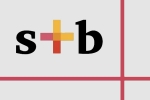Preparing a cash flow forecast: Simple steps for vital insight
One of the questions we’re often asked by small business owners is, “how do I prepare a cash flow forecast?” It’s an important part of financial planning for any business. But, if you’re an entrepreneur or founder, you may not have an accounting or finance background.
It’s really simple to create your own forecast. And once you know how, it will become one of the most important pieces of insight into your business you have.
Why is a cash flow forecast important?
Cash flow planning is essential: you need cash in the bank to pay your bills. Staying on top of your cash flow will help you see if you’re going to run out of money - and when - so you can prepare ahead of time. Perhaps it will show you that you need to cut overheads, find new investment, or spend time generating sales.
On the flip side, you might be doing well, and you’re considering expanding into new markets, investing in new products, taking on bigger premises, or recruiting new staff. Having accurate cash flow projections will help you see if you can afford to take the plunge.
Four steps to a simple cash flow forecast
One option is to use free financial forecasting software online, which can help you plan ahead for the next week, 30 days, or six weeks. Or you can follow the four steps below to build your own cash flow forecast.
1. Decide how far out you want to plan for
Cash flow planning can cover anything from a few weeks to many months. Plan as far ahead as you can accurately predict. If you’re well-established, you might have a predictable sales pipeline and data from previous years. If you’re a new business, you might not have a huge amount of data - so the further out you go, the less accurate your predictions will be.
Don’t worry too much if you can’t plan far ahead. Your cash flow forecast can change over time. In fact, it should. As things change, or you get more exact estimates, you can update your plan.
2. List all your income
For each week or month in your cash flow forecast, list all the cash you’ve got coming in. Have one column for each week or month, and one row for each type of income.
Start with your sales, adding them to the appropriate week or month. You might be able to predict this from previous years’ figures, if you have them. Remember though, this is about when the cash is actually in your bank account. Put the figures in for when you know clients will pay invoices, or bank payments will clear.
Also remember to include all non-sales income, for example:
- Tax refunds
- Grants
- Investment from shareholders or owners
- Royalties or licence fees
Add up the total for each column to get your net income.
3. List all your outgoings
Now you know what’s coming in, work out what you’ve got going out. For each week or month, make a list of all the money you’ll be spending, for example:
- Rent
- Salaries
- Raw material
- Assets
- Bank loans, fees and charges
- Marketing and advertising spend
- Tax bills
Once you’ve listed everything you spend, add up the total for each column to get your net outgoings.
4. Work out your running cash flow
For each week or month column, take away your net outgoings from your net income. That will give you either a positive cash flow figure (you’ve got more cash coming in than you’re spending) or a negative cash flow figure (you’re spending more than you’ve got coming in).
You can then keep a running total, from week to week, or month to month, to get a picture of your cash flow forecast over time. Too many negative weeks might spell trouble, and you’ll need to do some forward-planning to make sure you can meet your commitments - e.g. paying salaries, loan payments, and rent. Equally a few positive months might signal that you’ve got money to expand or invest.
Contact us













